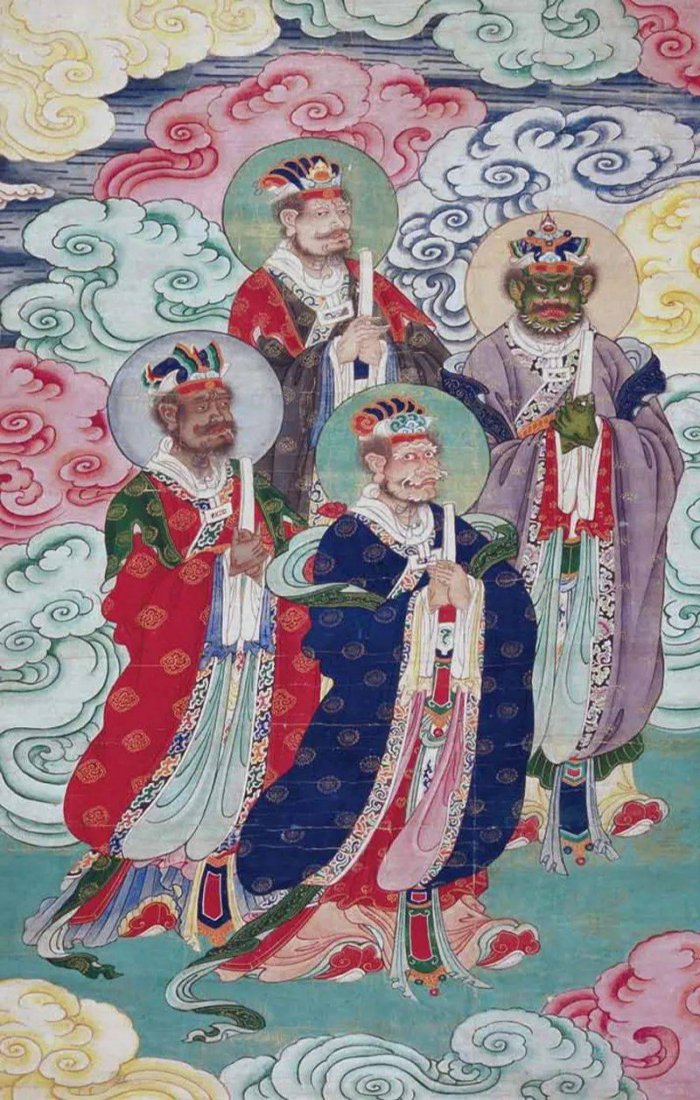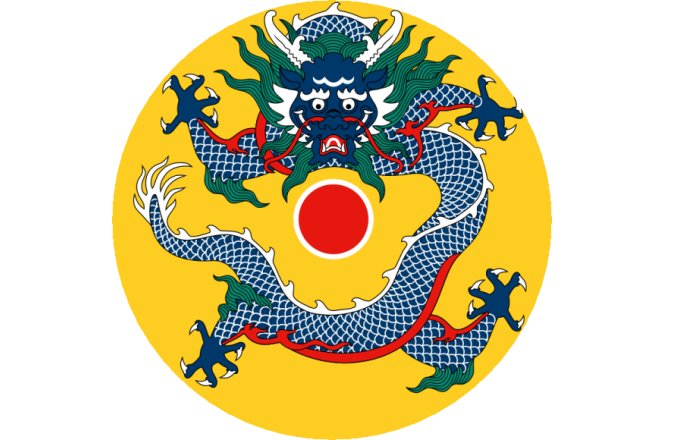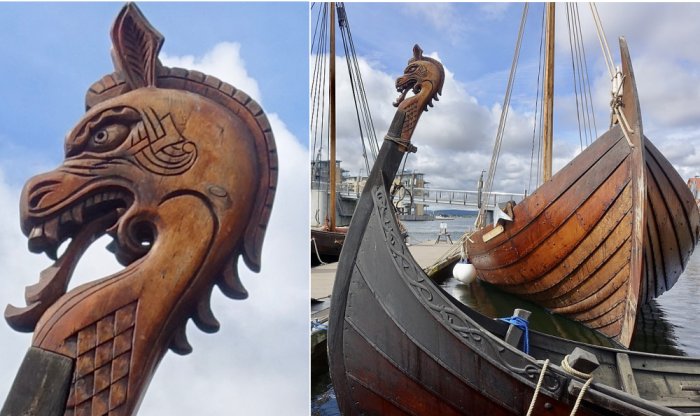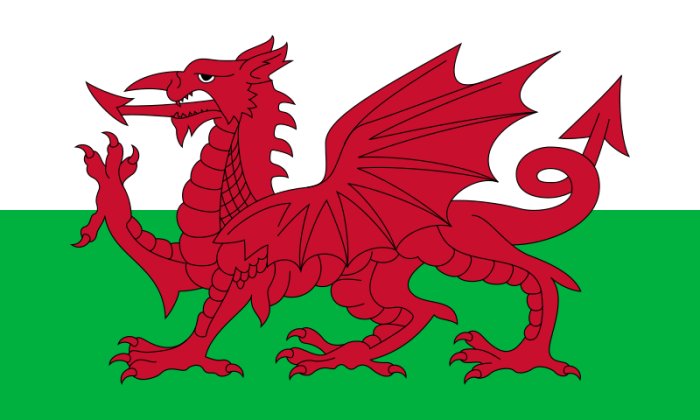Dragons And Dragon Kings In Ancient Mythology
A. Sutherland - AncientPages.com - We encounter dragons in almost every ancient world culture. Dragons played an essential role in the beliefs of our ancestors and were depicted in various ways.
Four Seas Dragon King. Credits: Unknown (Qing Dynasty) - Public Domain
Dragons can be placed in East and West groups, regarded as either good or very fearsome and evil creatures.
Dragons in Ancient Chinese Mythology
In ancient China, the dragon was a highly significant creature that became a symbol of the Emperor, and his throne was sometimes called the Dragon Throne. Ancient Chinese believed dragons were in control of the weather and water. These creatures were said to be able to manipulate oceans, floods, tornadoes, and storms.
There are nine distinctive Chinese dragons; some are serpent-like creatures with large bodies and long heads. The dragon in China is a benign creature that is said to bring wisdom, power, and luck. They are famous for their goodness, warding off evil, protecting the innocent, and ensuring safety.
Tradition and celebration of New Year in China can be traced to a dragon named Nien (or "year").
The Traditional Rounded Chinese Dragon is usually seen on imperial buildings, official uniforms, and coins. The design dated back to Tang Dynasty (7th-8th century). Please also note this is not the emblem of the Qing dynasty. Image credit: Sodacan - CC BY-SA 4.0
Nien was a legendary wild beast that attacked people at the end of the old year. Villagers would use loud noises and bright lights to scare the creature away, a practice that slowly morphed into the Chinese New Year festivities. Today the dragon has its year on the Chinese calendar.
Dragons In British And Scandinavian Mythology
Dragons were often depicted as wingless creatures in the British Isles and Scandinavia. In this part of the world, depictions of the dragon tended to show a malevolent creature that was very difficult to kill.
The West dragon was wingless, lived in dark places or wells, and guarded hoard treasures. Approaching the dragon was almost impossible because of its poisonous fire breath.
Dragons in British and Scandinavian mythology often appear in stories when a prince tries to save a young maiden from being abducted by a fearsome animal. If he can slay the dragon, he can become the new King and win the girl as his bride.
Dragon Kings In Chinese Mythology
In ancient Chinese mythology, we encounter five enormous dragon kings who were rainmakers and rulers of the waters.
Four of them were stationed at the cardinal points and ruled the seas. Their chief had his abode in the middle. The five dragon kings were named Lung Wang.
The dragon kings of China lived in crystal palaces under the sea. Their underwater dwellings were part of the mysterious Underworld that could only be reached through underground mountain caves and special secret entrances. When the Water Dragons rose to the surface, they caused typhoons, and when they flew through the air caused heavy rain and hurricanes. The Dragon Kings are among the deified forces of nature of the Taoist religion.
Dragon's Head As A Viking Symbol
A dragon's head was one of the most famous symbols of the Vikings. The Viking dragon was, in many ways, a representation of the Midgard Serpent, a mythical sea creature who fought with the Norse god Thor.
Many ships were equipped with carved dragon heads on top of the stem, while the stern often was shaped like a dragon's tail.
Vikings built ships with huge dragonheads because they wanted to appear as frightening as possible from a long distance.
Prows of viking ships and medieval boats moored to the pier in the harbour of the small city of Tønsberg, Norway: "Saga Oseberg", a 2012 built full scale replica of the "Oseberg Ship", a Viking ship from about AD 820 discovered in a burial mound near Tønsberg, with the prow ending in a spiral shaped serpent's head "Saga Farmann", a 2018 built reconstrucion of the "Klåstadskipet" ship from about AD 820 "Sæheimr", built 2016, inspired by the "Fjørtoftbåten" boat from about AD 860, decorated with a dragon's head on the fore stem. Image credit: Wolfmann - CC BY-SA 4.0 - The photograph was taken in August 2019. - more.
Vikings called their longships "Drakkar" or dragon ships, and the dragon was a powerful and fearsome symbol of war.
The Pendragons Of Wales
Many have seen the Welsh flag features a red dragon and that the Prince of Wales uses rampant dragons on his banner.
Flag of Wales. Image credit: Unknown - Public Domain
The old British word "draig" means dragon (and warrior or ‘leader,’ while the "pen" meant head. The two words combined form Pendragon or Pen Draig, a noble surname in early Britain as early as the fifth century. The dragon symbol continued to be used by the last native Welsh princes of Wales, Llewelyn ap Gruffydd and Owain Glyndwr, during their struggles against English occupation in the 14th and 15th centuries.
The Pendragon name in Welsh literature includes Uther Pendragon, father of the legendary King Arthur.
Ancient And Modern Superstitions About Dragons
In ancient times, there were also many superstitions about the dragon; surprisingly, some persist even today.
It was, for example, believed that the blood of the dragon held unique properties that could give a person the power to see into the future. On the other hand, it was also said that if a knight dipped the tip of his sword into the dragon's blood and stabbed you with it, the wound would never heal.
Dragon teeth were thought to bring good luck to those who possessed them.
The dragon has survived as a powerful symbol in many parts of the world.
Written by – A. Sutherland AncientPages.com Staff Writer
Updated on Apr 1, 2024
Copyright © AncientPages.com All rights reserved. This material may not be published, broadcast, rewritten or redistributed in whole or part without the express written permission of AncientPages.com
Expand for referencesDoug Niles - Dragons: The Myths, Legends, and Lore
Carol Rose - Giants, Monsters, and Dragons: An Encyclopedia of Folklore, Legend, and Myth
More From Ancient Pages
-
 Why Was The Face Of Mysterious Ust-Taseyevsky Stone Idol Suddenly Changed?
Archaeology | Jan 18, 2021
Why Was The Face Of Mysterious Ust-Taseyevsky Stone Idol Suddenly Changed?
Archaeology | Jan 18, 2021 -
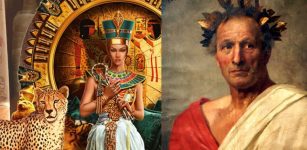 It’s Possible To Find Your Ancient Doppelganger – This Is What You Need To Do
Archaeology | Apr 26, 2017
It’s Possible To Find Your Ancient Doppelganger – This Is What You Need To Do
Archaeology | Apr 26, 2017 -
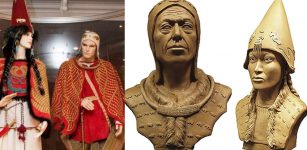 Stunning Facial Reconstruction Of ‘Siberian Tutankhamun’ And His ‘Queen’ Who Died 2,600 Years Ago
Archaeology | Jan 12, 2021
Stunning Facial Reconstruction Of ‘Siberian Tutankhamun’ And His ‘Queen’ Who Died 2,600 Years Ago
Archaeology | Jan 12, 2021 -
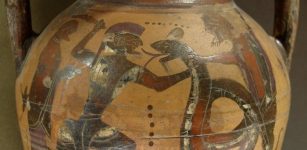 Cadmus – Legendary Phoenician Hero And Founder Of Prosperous City Of Thebes
Featured Stories | Sep 6, 2023
Cadmus – Legendary Phoenician Hero And Founder Of Prosperous City Of Thebes
Featured Stories | Sep 6, 2023 -
 Discovery Of Chromosomes Offers Evidence Of Ancient Humans Living In South America Over 18,000 Years Ago
Archaeology | Aug 21, 2022
Discovery Of Chromosomes Offers Evidence Of Ancient Humans Living In South America Over 18,000 Years Ago
Archaeology | Aug 21, 2022 -
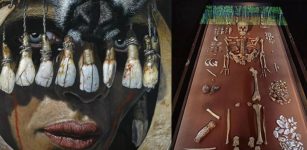 DNA Study Sheds New Light On The Mysterious 9,000-Year-Old Shaman Burial In Bad Dürrenberg
Archaeology | Nov 29, 2023
DNA Study Sheds New Light On The Mysterious 9,000-Year-Old Shaman Burial In Bad Dürrenberg
Archaeology | Nov 29, 2023 -
 Mabon Festival And The Autumn Equinox Celebrated By Pagans
Ancient Traditions And Customs | Sep 19, 2024
Mabon Festival And The Autumn Equinox Celebrated By Pagans
Ancient Traditions And Customs | Sep 19, 2024 -
 Can You Help Identifying This Strange Bamboo Cart Found In A Melted Glacial Path In Switzerland?
Archaeology | Nov 6, 2024
Can You Help Identifying This Strange Bamboo Cart Found In A Melted Glacial Path In Switzerland?
Archaeology | Nov 6, 2024 -
 Pompeii Region IX: Roman Advanced Construction Techniques In New Light
Archaeology | Mar 27, 2024
Pompeii Region IX: Roman Advanced Construction Techniques In New Light
Archaeology | Mar 27, 2024 -
 Unique 8,400-Year-Old Burial Of A Dog Different From Modern Dogs Discovered In Sweden
Archaeology | Sep 25, 2020
Unique 8,400-Year-Old Burial Of A Dog Different From Modern Dogs Discovered In Sweden
Archaeology | Sep 25, 2020 -
 Biblical Event Verified By Study Of Earth’s Magnetic Field?
Archaeology | Jan 4, 2024
Biblical Event Verified By Study Of Earth’s Magnetic Field?
Archaeology | Jan 4, 2024 -
 Ancient DNA’s Analysis Delivers Crucial Clues To Migratory Patterns During The First Millennium AD
DNA | Jan 2, 2025
Ancient DNA’s Analysis Delivers Crucial Clues To Migratory Patterns During The First Millennium AD
DNA | Jan 2, 2025 -
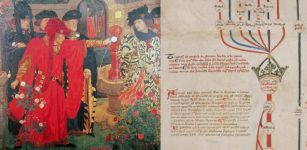 Unique Canterbury Roll – Ancient Manuscript Reveals Its Secrets About History Of England
Archaeology | Jan 5, 2018
Unique Canterbury Roll – Ancient Manuscript Reveals Its Secrets About History Of England
Archaeology | Jan 5, 2018 -
 Mystery Of The Unique Tiarp Dolmen – One Of Oldest The Stone Burial Chambers In Scandinavia
Archaeology | Jan 30, 2024
Mystery Of The Unique Tiarp Dolmen – One Of Oldest The Stone Burial Chambers In Scandinavia
Archaeology | Jan 30, 2024 -
 Ceramics Are Telling The Story Of 14th Century Chinese Trade
News | Jun 28, 2023
Ceramics Are Telling The Story Of 14th Century Chinese Trade
News | Jun 28, 2023 -
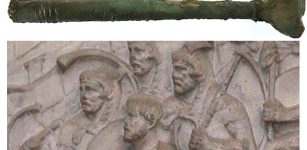 Vindolanda Treasures: Rare Roman Cornu Mouthpiece – Instrument of War – Uncovered
Archaeology | Sep 24, 2022
Vindolanda Treasures: Rare Roman Cornu Mouthpiece – Instrument of War – Uncovered
Archaeology | Sep 24, 2022 -
 Focus On Unique And Spectacular Gallery Grave In Ancient City Of Dara, Mardin
News | Aug 24, 2020
Focus On Unique And Spectacular Gallery Grave In Ancient City Of Dara, Mardin
News | Aug 24, 2020 -
 Cosquer Cave And Its Magnificent Underwater Stone Age Paintings Created 27,000 Years Ago
Featured Stories | Apr 20, 2021
Cosquer Cave And Its Magnificent Underwater Stone Age Paintings Created 27,000 Years Ago
Featured Stories | Apr 20, 2021 -
 When Giants Ruled North America – Giant Skeletons ‘Erased’ From History – Part 2
Ancient Mysteries | Nov 22, 2018
When Giants Ruled North America – Giant Skeletons ‘Erased’ From History – Part 2
Ancient Mysteries | Nov 22, 2018 -
 Did The 8 Omens Of The Aztecs Foretell The End Of Their Civilization?
Civilizations | Jan 30, 2020
Did The 8 Omens Of The Aztecs Foretell The End Of Their Civilization?
Civilizations | Jan 30, 2020

